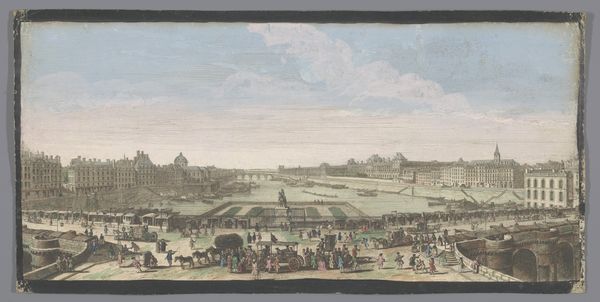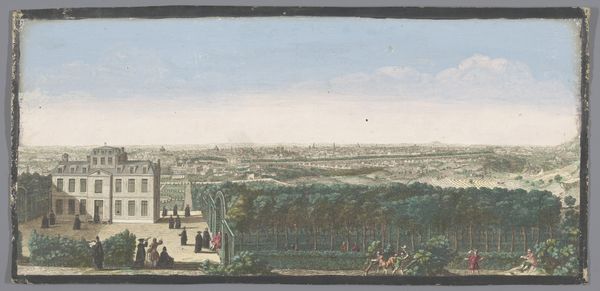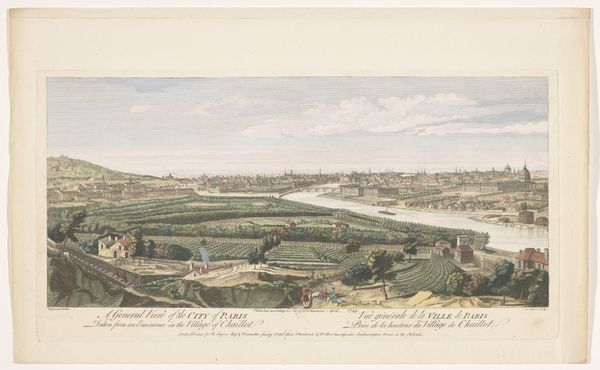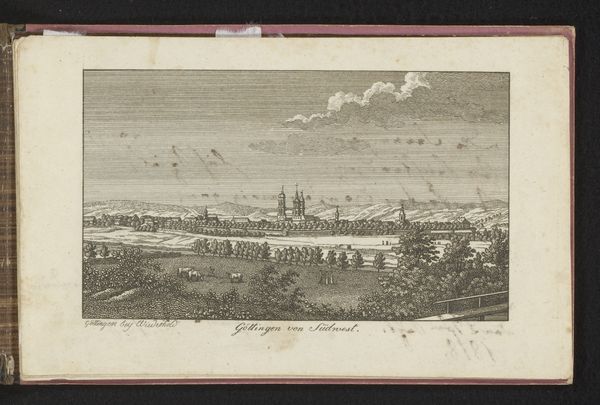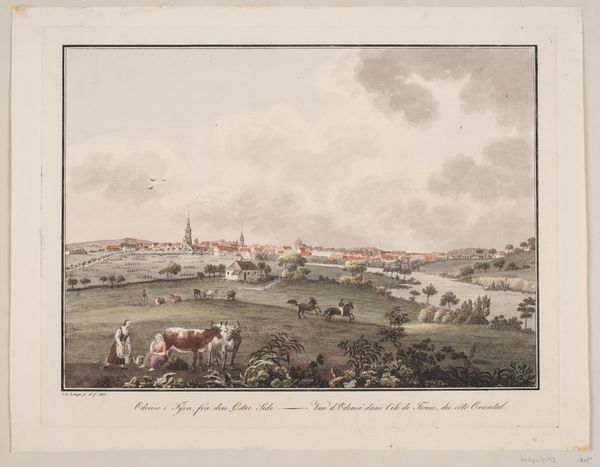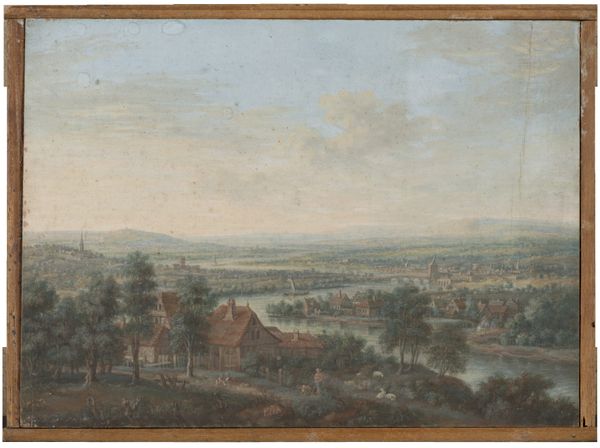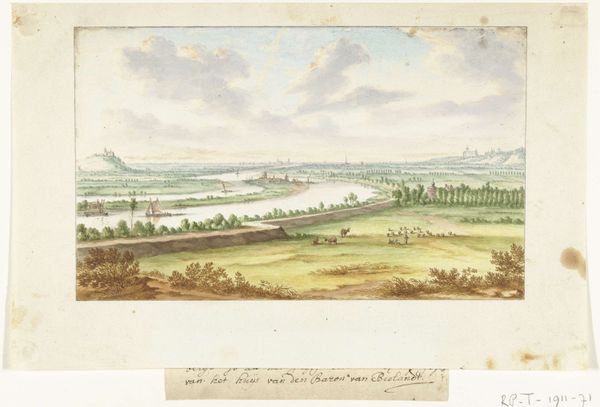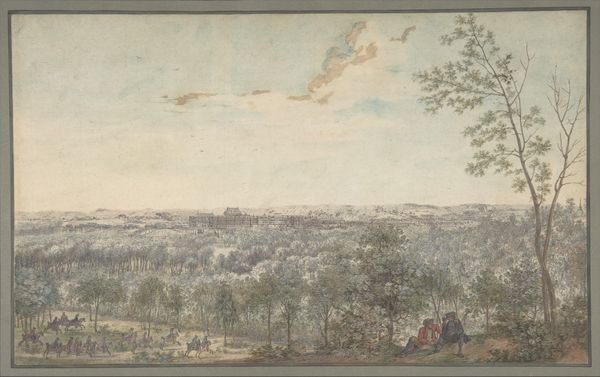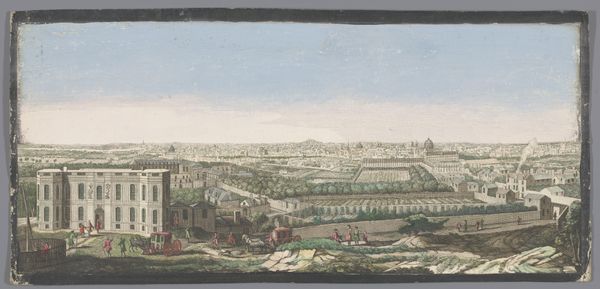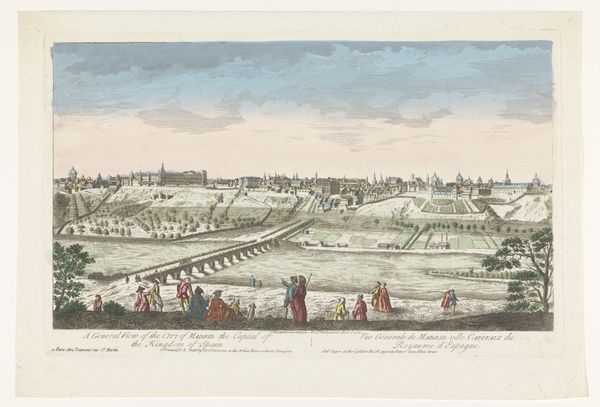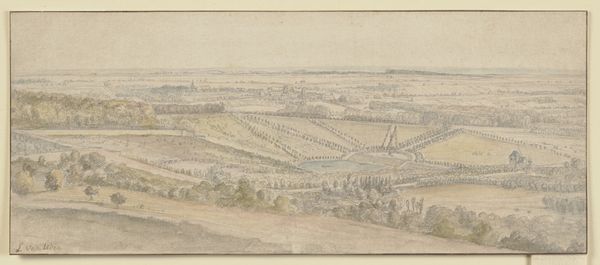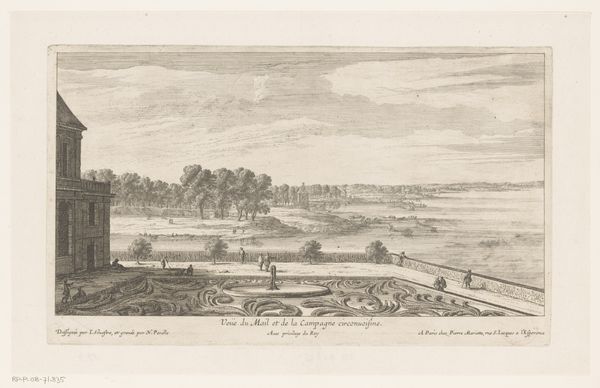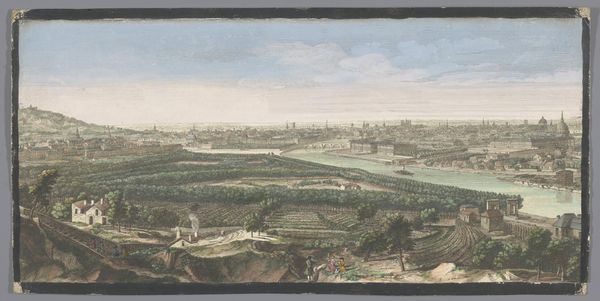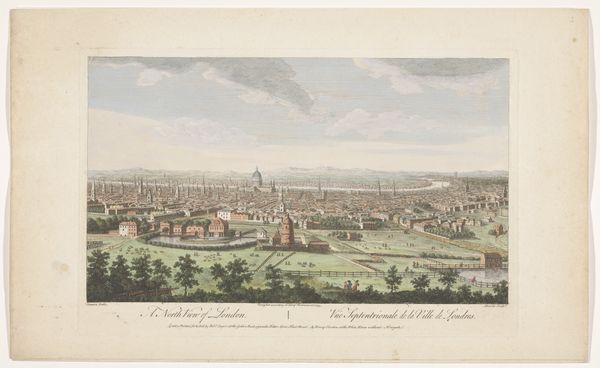
Gezicht op de stad Richmond aan de rivier de Theems Possibly 1752 - 1758
0:00
0:00
watercolor
#
water colours
#
landscape
#
watercolor
#
coloured pencil
#
cityscape
#
genre-painting
#
watercolor
Dimensions: height 248 mm, width 410 mm
Copyright: Rijks Museum: Open Domain
Editor: This watercolor piece, "View of the City of Richmond on the River Thames" possibly from between 1752 and 1758 by Robert Sayer, captures a tranquil cityscape. I am drawn to how the colored pencil brings such a stillness to the architecture nestled along the Thames, everything feels neatly composed. How would you approach this piece? Curator: The meticulous use of watercolor and coloured pencil is revealing. Note how the layering of these materials simulates depth and light, crafting a very specific vision of the era. Do you observe how the labor is seemingly 'invisible'? This 'invisibility' is a key point in understanding how elite status was communicated, literally "painted", during that era. The act of producing 'art' distanced from manual, 'common' labor. Editor: I see your point. So, by using these delicate materials to represent the scene, Sayer elevates the location itself, and the people who inhabit that world? Is it a question of aestheticizing labour to further create a sort of detachment from that labour? Curator: Exactly. The image serves as a social text, one of aspiration and control. Notice how the manufacturing processes within the city are not visible - only country houses and leisurely activities. The painting materializes a specific type of socio-economic vision through its seemingly 'innocent' depiction of the landscape. Editor: So it's less about the picturesque landscape itself and more about what the artistic materials reveal about the values of the time? Curator: Precisely! This is more than just a pretty picture, it's a meticulously constructed narrative of power and social order. Editor: That gives me a lot to think about. I will definitely pay more attention to what the materials used tell us about the historical context from now on!
Comments
No comments
Be the first to comment and join the conversation on the ultimate creative platform.
